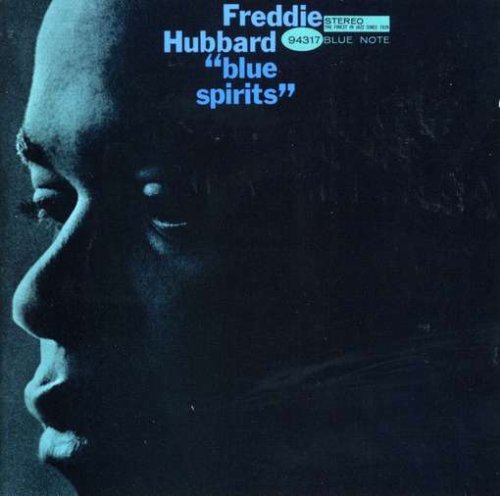
Freddie Hubbard’s Blue Spirits album is culled from sessions recorded in February 1965 and in March of the following year. The 1966 tracks are bonus tracks added to this Van Gelder Edition release and feature Hubbard with Joe Henderson and Hosea Taylor on saxes and a rhythm section of Herbie Hancock, Reggie Workman, and Elvin Jones.
The other sessions have a couple of different lineups as well, but both feature Hubbard not only as a trumpet player but as a composer and arranger, with one of his strongest collaborators, alto saxophonist James Spaulding.
Read: How V.S.O.P. Revived Freddie Hubbard’s Career
The first group leads off the album with “Soul Surge,” a very funky blues cut that features Hubbard and Spaulding along with Joe Henderson and euphonium player Kiane Zawadi as the front line while Harold Mabern, Larry Ridley, Clifford Jarvis, and conga player Big Black hold down the rhythm. Mabern’s funky, gospel-tinged piano punctuation is especially noticeable. The same group also cut the fourth track, “Cunga Black,” a Latin blues number.
The second group heard here recorded their session a week after the above tunes were cut. Here Hubbard and Spaulding are joined by venerable tenor man Hank Mobley, Zawadi again, McCoy Tyner on piano, Bob Cranshaw on bass, and Pete La Roca at the drums.
They provide a somewhat softer, more subtle focus on the tunes “Blue Spirits”, “Outer Forces,” and the closer, “Jodo.” “Blue Spirits” is a gorgeous tune, and Hubbard’s intro is up there with the time’s top arrangers. Spaulding offers a mood-setting flute solo, and Hubbard plays as well as he ever has, able to move from a relaxed, lyrical vibe to a more frenetic pace.
“Outer Forces” is a sheer delight, from its attention-getting intro right through its bop funhouse of chord changes. Hubbard demonstrates his technique a bit here, but it’s so musical you almost don’t realize how hot he’s playing. Yeah, the guy really was Miles’ heir in many ways.
“Jodo” really moves full speed ahead as Henderson starts to get somewhat ‘outside’ in his solo, and though pianist McCoy Tyner brings it back ‘inside’ with some distinct blues inflections over a trademark modal left hand deep in the piano’s bottom registers, the intensity never flags.
The bonus tracks are not quite as successful as the sessions that formed the original Blue Spirits album, but they are welcome additions. “The Melting Pot” has a nice breezy Latin by way of New Orleans or the Caribbean feel that is definitely very cool. Hancock’s denser harmonic configurations push Hubbard and Henderson much harder than Mabern or even Tyner had been able to do, and Jones provides a lot of rhythmic motivation even while taking a fairly low-key approach.
“True Colors” starts with a brief Jones solo intro before the horn line, with Hosea Taylor on bassoon kicks in. Jones kicks in with some brushwork that just manages to hold the whole thing together. Hancock is here on celeste, a weird little keyboard that sounds rather like the Adams Family’s harpsichord. Miles had either Hancock or Chick Corea play one on a session that remained unreleased until many years later. Like this performance, it was not wholly successful. In fact, while there are rewarding moments (Hubbard’s solo, for instance) , much of the other material becomes so annoying that it’s difficult to imagine revisiting this one any time soon.
Bonus material notwithstanding, Blue Spirits is actually one of the top Freddie Hubbard recordings out there, especially if you listen not just to the soloists, but to the ensemble as well.